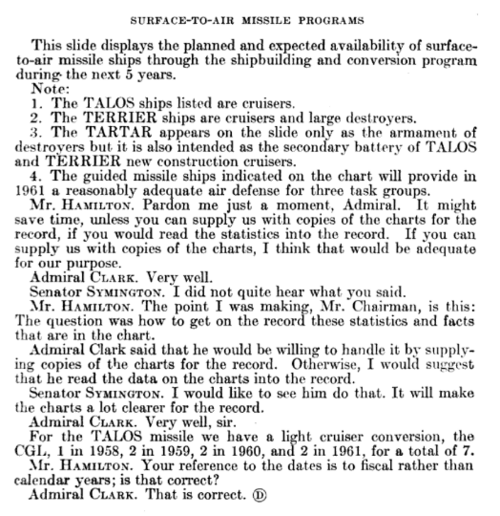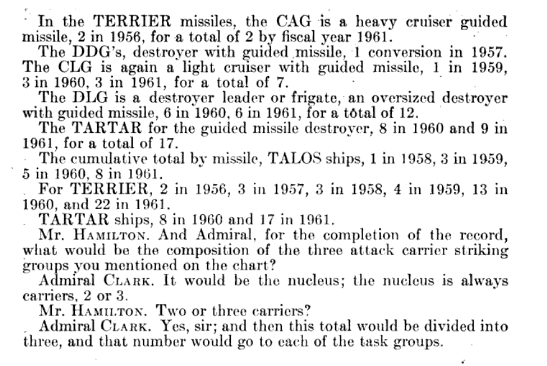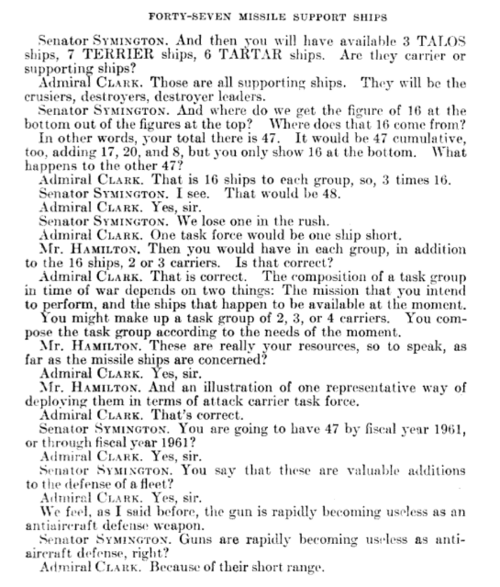My ideal is to have 10 Ethan Allen class built (instead of 5 George Washington class and 5 Ethan Allen class) which would have larger missile tubes so they could have been rearmed with Poseidon missiles too. However, I think that could not have been done because Polaris was a crash programme and they were trying to get as many boats as possible in service as soon as possible.
Remember that Regulus and Polaris were literally a battle for survival for the USN.
I'm having one of my blond moments. I can't tell whether you are opposing my comment or supporting it by providing some background information.
For what it's worth, it's impossible for me to have remembered that
"Regulus and Polaris were literally a battle for survival for the USN" in the
"Real World" because I didn't know that
"Regulus and Polaris were literally a battle for survival for the USN" in the first place.
However, the fact that
"Regulus and Polaris were literally a battle for survival for the USN" in the
"Real World" is irrelevant to the thread because it is effectively a
"United States Navy money no object" thread and therefore the USN wasn't fighting a battle for survival in this
"version of history".
Furthermore, even if your comment was relevant to the thread, I don't see how it's relevant to my
"ideal" of having the first 5 SSBNs built as additional Ethan Allen class boats instead of as George Washington class boats? That is unless your comment was supporting my final sentence i.e.
"However, I think that could not have been done because Polaris was a crash programme and they were trying to get as many boats as possible in service as soon as possible."Part of Post 54.
Part of Post 54.
With hindsight, I would have built Greyback, Growler & Halibut as Attack Submarines and converted 3 additional old submarines to Regulus Boats. Similarly, I would have built Sailfish, Salmon & Triton as Attack Submarines and converted 3 additional old Boats to Radar Picket Submarines (SSR).
This fits better in an ALT-1950s US Navy, but here goes.
Sailfish & Salmon were approved in FY52, Greyback & Growler were approved in FY53 & FY55 respectively. I think they should have been built as submarines of the Tang or Darter classes. The former were approved FY47-49 and the latter in FY54. With hindsight, I also think that the 3 Barracuda class SSK (approved FY48 & 49) should have been additional boats of the Tang class and in their place 3 additional old boats converted to SSKs. That would increase the number of Tang & Darter type submarines from 7 to 14.
Halibut & Triton were approved in FY56 and so were the last pair of Skates, Skipjack & the 3 Barbels. I'd like them to be built as additional Skate class SSN (and as this appears to be a
"money no object" thread) have another 3 Skipjacks built instead of the Barbels. That would increase the number of Skipjack class from 6 to 11. I'd also like 4 additional Skipjacks to be built instead of the Skates, but the only way (that I know of) to achieve that is build Albacore at least 2 years earlier and I think that's a
"wank" too far.
The one-off SSKN Tulibee was approved in FY58. However, Thresher was approved in FY57 and with hindsight I think she should have been an additional Thresher which would increase that class from 14 to 15 boats.
Again, remember that Regulus was literally existential for the USN at the time. There weren't going to be carriers, because "the USAF does that" and no carrier plane of the early 1950s could drop a 10,000lb nuclear bomb.
Again, I'm having one of my blond moments. I can't tell whether you are opposing my comment or supporting it by providing some background information.
Again, for what it's worth, it's impossible for me to have remembered that
"Regulus was literally existential for the USN at the time" in the
"Real World" because I didn't know that
"Regulus was literally existential for the USN at the time" in the first place.
Again, the fact that
"Regulus and Polaris were literally a battle for survival for the USN" in the
"Real World" is irrelevant to the thread because it is effectively a
"United States Navy money no object" thread and therefore the USN wasn't fighting a battle for survival in this
"version of history".
Although, by the time Greyback, Growler & Hallibut were built (i.e. the second half of the 1950s) the USN had won its battle for survival and there were going to be aircraft carriers. Super carriers (i.e. the Forrestal class, Constellation, Kitty Hawk & Enterprise) were being laid down at the rate of one per year, the Midways were being refitted to SCB.110 standard and 15 Essex class were having SCB.27 refits and 14 of them would receive angled flight decks under SCB.125.
Again, even if your comment was relevant to the thread, I don't see why it is relevant to what I wrote, because I was suggesting that with hindsight more Tang & Darter class should have been built instead of the Barracuda class SSK & Sailfish class SSR and that more SSNs should have been built instead of the SSKN, SSRN and Barbel class SS.
That was until I re-read my comment and saw that I'd also suggested building more Tang or Darter class SS instead of the SSGs Greyback & Growler and an additional SSN instead of the SSGN Halibut. So fair enough.
However, there was still a Regulus programme in my Alternative 1950s USN. The difference is that not building new SSKs, SSGs & SSRs (including those that were nuclear powered) and building more SS & SSN was offset by converting more World War II built submarines to SSKs, SSGs & SSRs. Therefore, instead of the 3 new (including one nuclear powered) Regulus submarines and 2 World War II boats that were converted to Regulus submarines in the
"Real World" there would have been no new Regulaus submarines and 5 conversions of of World War II boats in this
"version of history".



